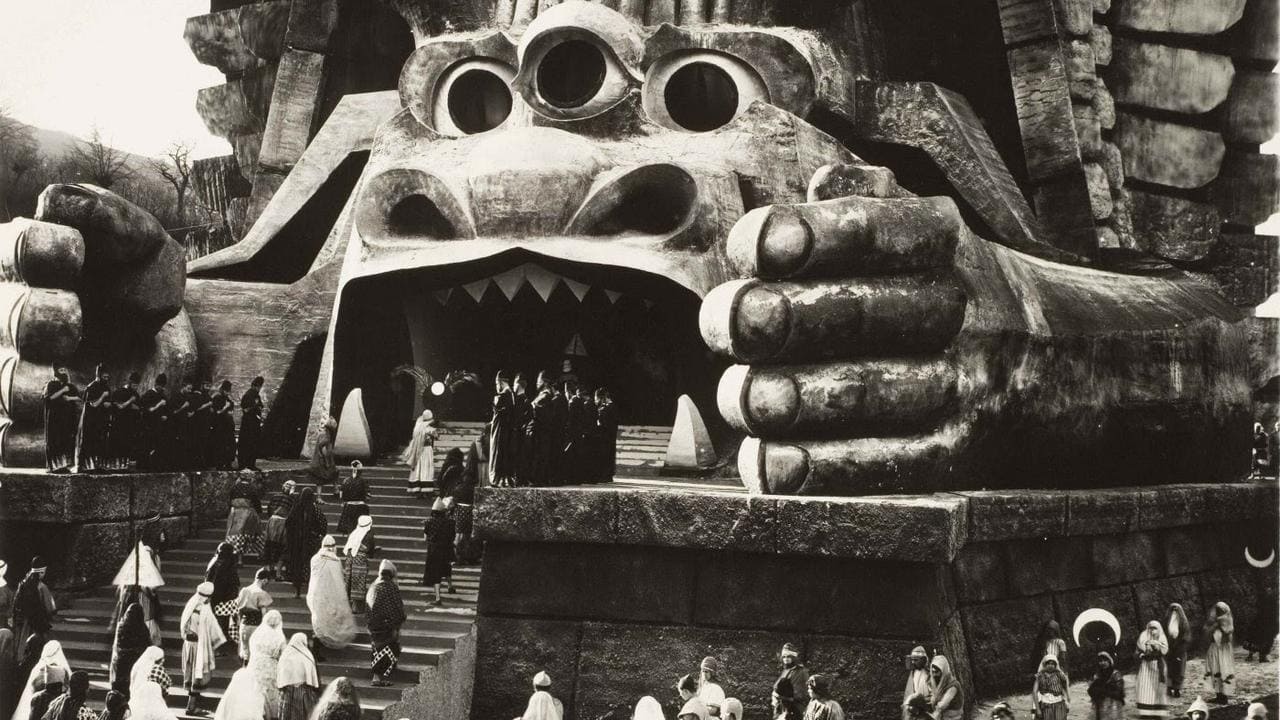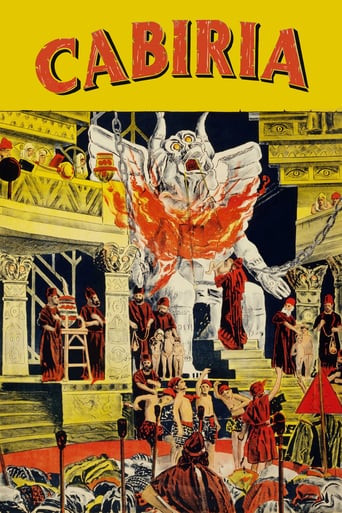

The film that is said to inspire G.W. Griffith to make his Intolerance is a very visually beautiful film.The costume work, the atmosphere and the locations are very impressive. Since the lack of innovative movie techniques that, thought was invented, but not quite used here makes the angels very static.The lack of close-ups gives us a hard time to feel strongly for the characters or even give them the characteristic symbols we are so used of today. It also is extremely story-based and rely heavily on inter-titles. I like the story, thought it do have some flaws. The epic storytelling ain't good enough to keep us engaged throughout the whole movie and I think the lack of sympathy or the boiling feeling of tragedy is a big loss in a movie which focus on realism.I love the placement of the camera angels that match the background aesthetics. It's things like that, which make the feature enjoyable with the very basics of film technique.
... View MoreA truly remarkable film! Operatic sets, histrionic posturing and title cards by protofascist Gabriele D'Annunzio make this silent classic a cut above all that came before and much that came after. It doesn't really matter that the title character gets precious little screen time and zero close-ups or that there's more plot than a dozen movies, this picture is special. I mean, it's got everything: volcanoes, shipwrecks, blood thirsty pagans, greedy tavern owners, not to mention guest appearances by Archimedes (with the original death ray), Hannibal (with elephants), Moloch (evil overlord of the Dark Empire) and other assorted luminaries including a recalcitrant leopard who wanders on and off the set. No zombies though.Note: at the rate the Priests of Moloch are feeding tender virgins into the fiery Mouth of Moloch (more like his chest, actually) it would take several hours to feed all 100 of them attention spans just aren't what they used to be! This film was also notable as the beginning of the ever-popular Maciste franchise. Bartolomeo Pagano starred in a series of over 20 further adventures of Maciste before the 20s were out, to say nothing of all later incarnations. In one memorable scene Mr. Maciste gives new meaning to the phrase "the daily grind." This is a movie not to be missed!
... View MoreCABIRIA is perhaps the first huge spectacular movie epic and the title of the film is derived from the name of a small girl. The film begins with her miraculous survival from a very realistic eruption of a volcano and takes her on a boat ride to Carthage--Rome's arch-rival during the years of the Republic. Here, she is sold into slavery and is slated to be sacrificed to the evil god, Moloch. The scene of Moloch's temple and the baby-eating idol is truly amazing and horrifying. It must have cost a small fortune to construct. Cabiria is rescued by a Roman spy. However, while she is not killed, she remained a slave for a decade. Eventually, when Rome gained the upper hand in the Punic Wars (with Carthage), Cabiria was saved and everyone lived happily ever after.Now as to why the movie was made in Italy at that particular time, this film came just after Italy successfully attacked North Africa and seized colonies. This film, then, is a sort of justification for this action--as it paints the Carthaginians as baby-sacrificing and evil. Only after the good Romans conquer them is peace and justice restored! This means that this film was one of the earlier propaganda pieces ever put on film and it came out just before the First World War.When you watch CABIRIA, you need to understand the context of when it was made to truly appreciate the film. While the acting might seem over-the-top at times, for 1914 it was a truly amazing film. Never before had a film been so dramatic or had sets to equal this. In fact, the spectacular nature of this Italian film had a strong impact on the films of D. W. Griffith, as it wasn't until 1915 that his huge epic BIRTH OF A NATION and 1916 when INTOLERANCE were released---and they were obviously strongly inspired by CABIRIA. While INTOLERANCE is quite similar to CABIRIA in spots, INTOLERANCE has even grander sets and special effects though the story itself was neither as involving nor as interesting--being muddled quite a bit by having four stories overlapping and the over-the-top moralizing Griffith was known for in many of his films. Instead, CABIRIA is much more straight-forward and interesting storytelling and compares very well to later epics--even some of the sound epics. Sure, by later standards it might seem hokey in spots, but for 1914 it was a huge leap forward in entertainment and is a must-see for all serious film historians.By the way, this review is based on the recent Kino Video restoration. Shorter versions do exist and the Kino version is apparently the closest to the original you can find.
... View MoreAn engrossing historical melodrama with all the trimmings, "Cabiria" would be rather impressive if it had been made in the mid- or late- 1920's, and the fact that it was made in 1914 is astounding. While it was widely known in its time, and apparently was once given full credit for its influence on other film-makers, it has been largely forgotten today, for no good reason. The story is involved and ambitious, the settings and scale are lavish and creative, and the historical scenario comes from the fascinating (if today little-known) period of the Punic Wars between Rome and Carthage. It's all very good in its own right, and it's even more of a success when you consider the new ground they had to break in bringing it all together so well.The story blends together several fictional and several historical characters, centering on the adventures and misfortunes of the girl Cabiria. As in any melodrama, there are some implausible developments, yet it rarely seems overly forced. The historical setting is used creatively, both to drive the action and to provide interesting settings and characters. While it is clearly fiction, it takes fewer liberties with history than do many other movies with historical settings, since it is designed for entertainment rather than to promote a particular viewpoint.And as entertainment, it delivers handsomely. This is well worth the trouble to find for anyone who enjoys watching silent movies. It is also worth seeing if you have even a passing interest in the development of cinema, because few movies have ever been so creative in using and improving upon the means available in their own era.
... View More